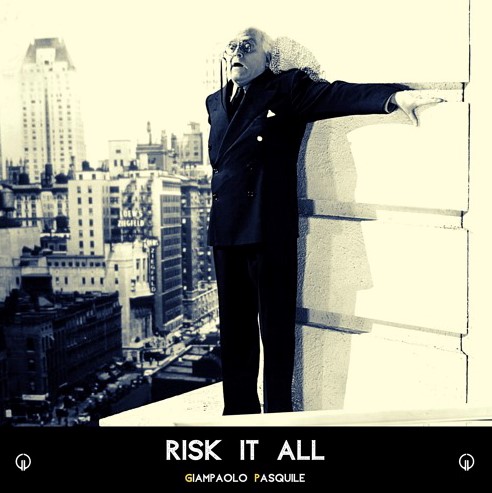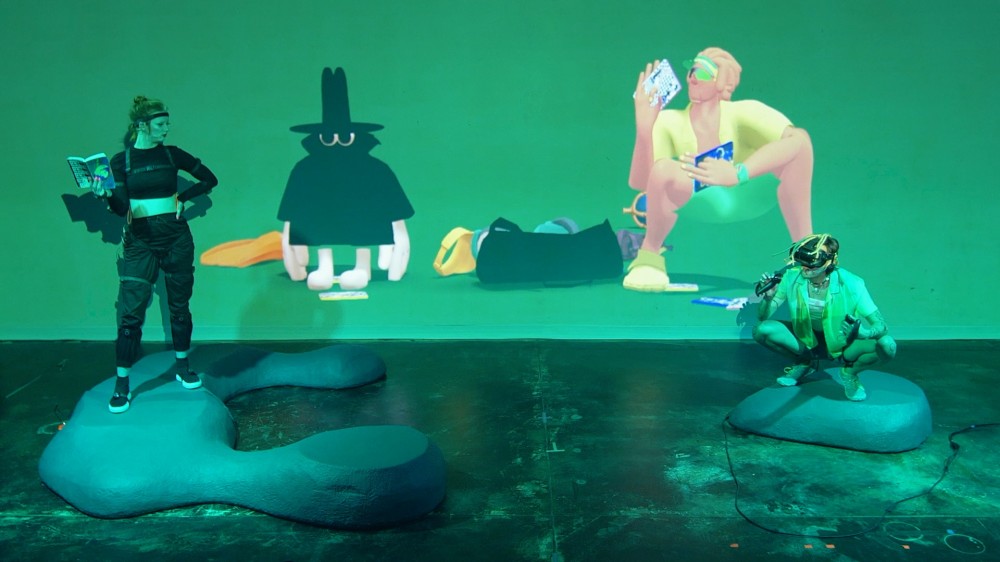
Theo Triantafyllidis Presents: Anti-Gone
Theo Triantafyllidis adapts Connor Willumsen‘s graphic novel Anti-Gone into an experimental work of hybrid theatre, performed with one foot in the physical world and the other in the virtual.
A playful strain of theatricality runs through all of Theo Triantafyllidis‘s work. Even his earliest works have the quality of carefully directed vignettes or sketches, turns of phrase, jokes and metaphors manifested visually within the design aesthetic of his complex interplay of objects and systems. As part of his 2018 series Role Play, he assumed the virtual costume of a non-binary, blue haired ork avatar to highlight the inherent performativity of his work both in and for digital spaces. In Radicalization Pipeline and Ork Haus, Triantafyllidis casts himself as both actor and dramaturge, using machine learning to enable an improvisational approach to live simulation while at the same time painstakingly designing and implementing intricate virtual stages upon which his simulations can run. Anti-Gone is the result of the artist bringing together all these aspects of his art practice on a physical, IRL stage. “I was already thinking a lot about performativity in VR and the relationship to avatars in my ork avatar series,” he explains. “All of that project was based on recording, rather than real time performance. I was starting to understand that there is so much potential in doing this in real time and having a game engine that allows for a world that is performing in real time and having performers that are interacting with it.” Based on Connor Willumsen’s graphic novel of the same name, Anti-Gone is a hybrid theatrical performance in which one actor wearing a motion capture suit faces out into the physical world, while the other stays in VR for the entire duration. A technicolour, post climate collapse, video game engine-generated world is projected on the stage behind and beneath them, a living, breathing ecosystem, brimming with apathetic people and toxic, tropical plant life which reacts and changes in response to Triantafyllidis’s prompts.
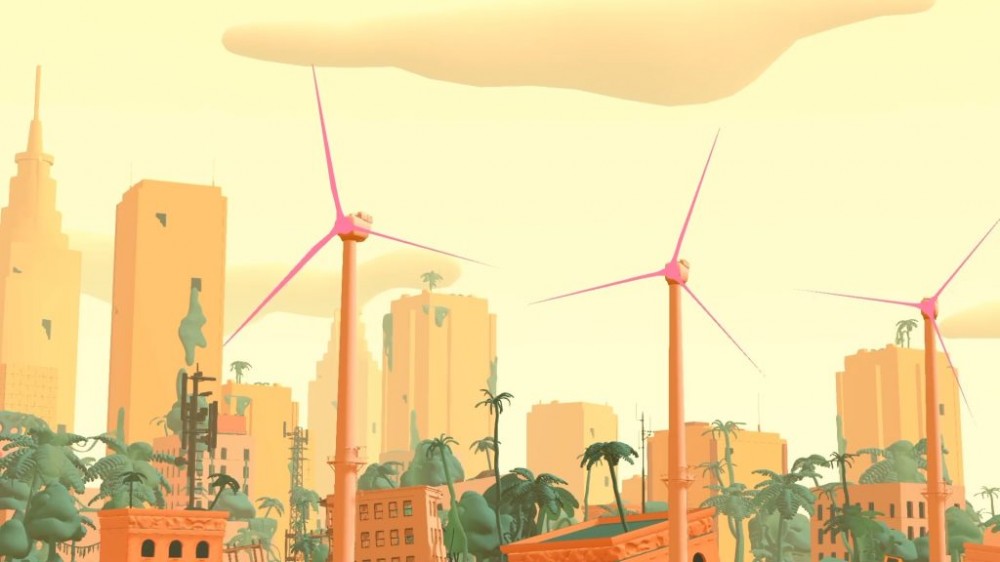
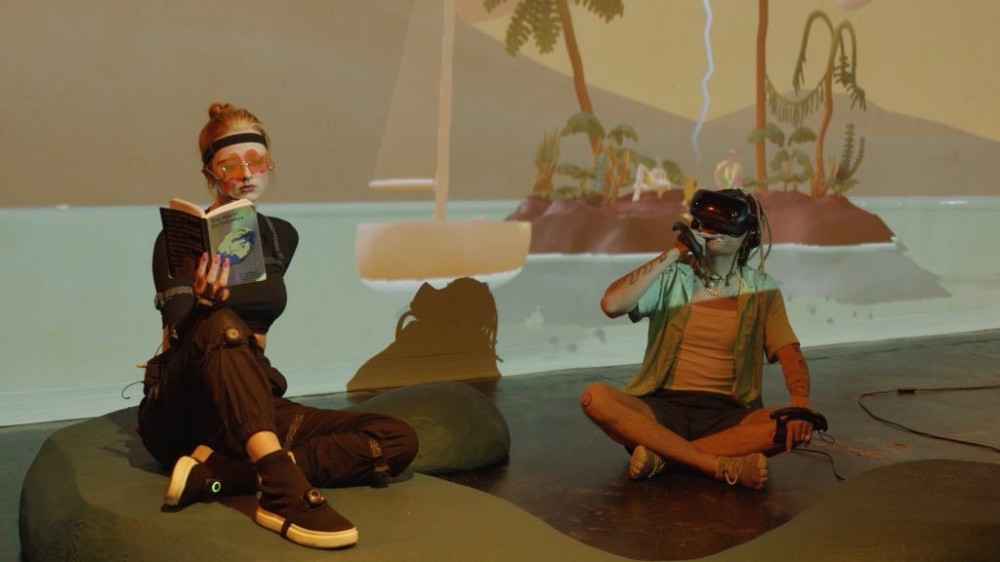
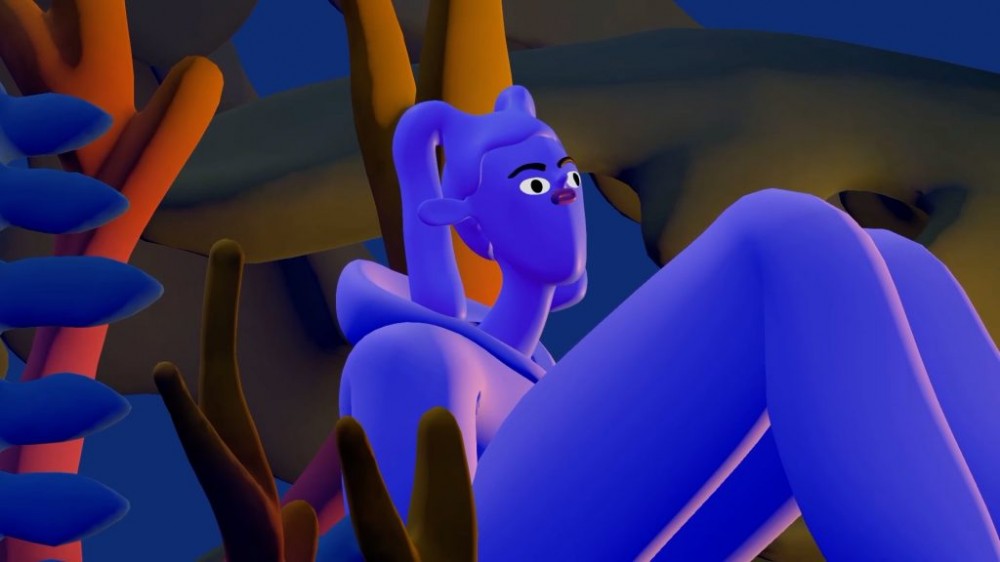
“I’m fascinated with theatre as a medium and the theatrical language,” says the artist. “In theatre there is this magical thing where a performer can say, ‘here’s a pen,’ and you don’t need to see the pen, you just know it’s there. It’s all based on make believe, theoretically you can create entire worlds with an empty stage and a few performers, asking the audience to imagine everything. There’s a big paradox in this entire project, whereby working with the game engine is this tedious process of planting every single tree and every single object in a very precise place in space, constructing this illusion in the exact opposite way, being very literal and very precise and having to construct everything from scratch.” Working live alongside a musician, a third performer, who performs and controls a host of secondary characters, both physically and with a controller and microphone, Triantafyllidis has complete control of the environment of the play using a game engine, with the ability to change the weather, the time of day, the traffic of the boats that navigate the flooded city where the play takes place, as well as behaviour of the NPCs that populate the world. “All together we are performing the world in real time,” he describes poetically. “I was very optimistic at the beginning of the project,” he continues. “The comic book has two characters and a few scenes so it seemed pretty manageable to make this game engine with the tools I had at the time, but this slowly snowballed into an entire long term theatrical production with a full video game production team working alongside and trying to have the two constantly in dialogue, making huge changes in one another. I felt like we were trying to discover a new language for performing and a new way of building a game world that is able to accommodate this type of situation.”
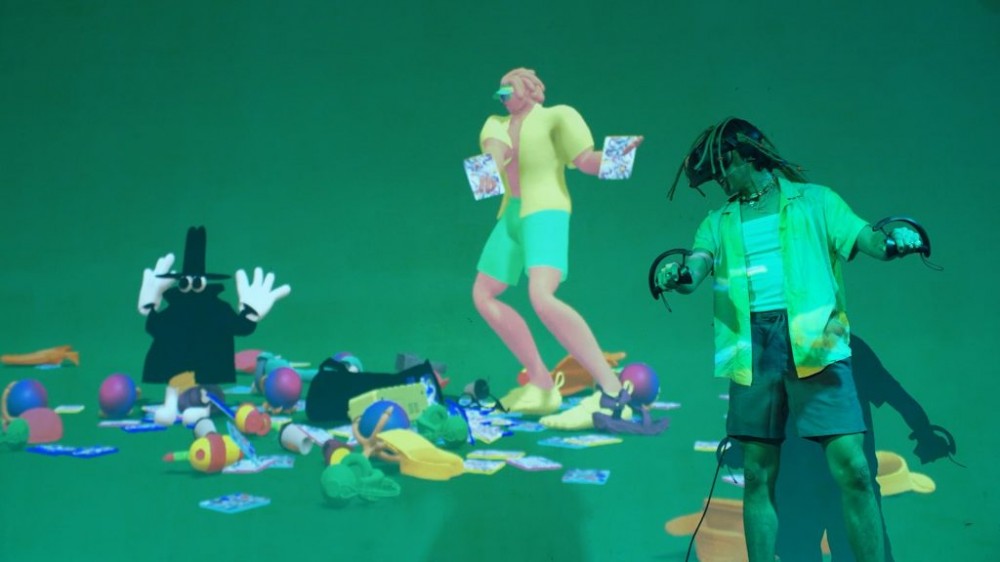
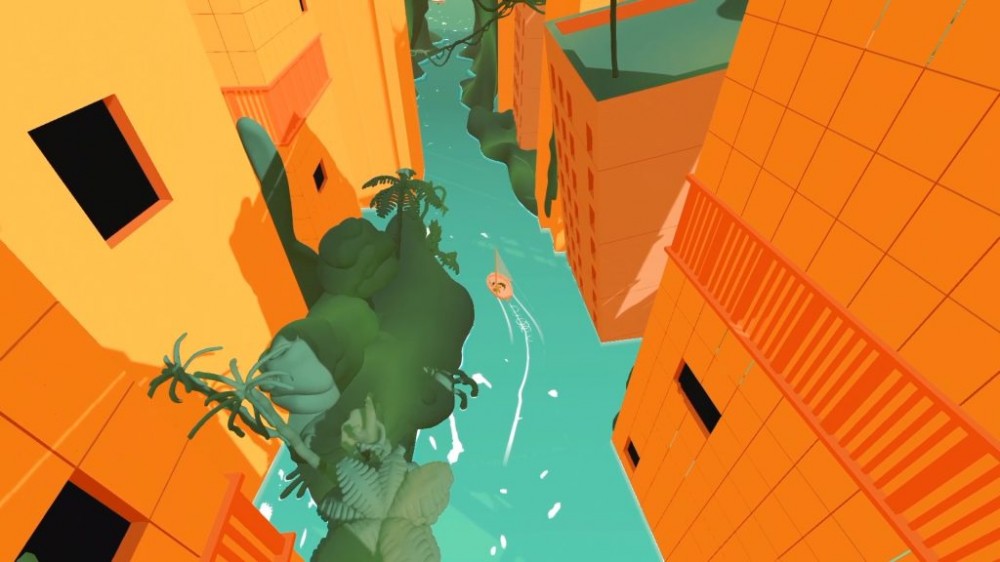
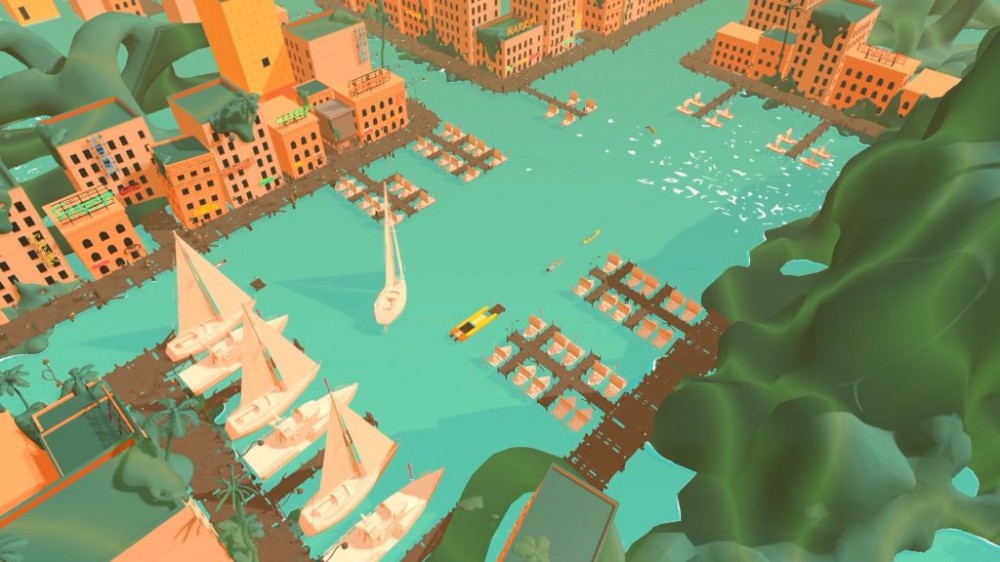
Anti-Gone follows a dysfunctional sci-fi hipster couple, Spyda and Lynxa, as they persistently ignore the catastrophe that surrounds them to play out the mundane conflict of their failing relationship. Disconnected from themselves, each other and the world around them, they argue, fuck, score drugs and go to the cinema, completely immersed in a miraculously persistent swell of consumerism and neoliberal, anhedonic pleasure seeking. Read as contemporary homage to the dissociation felt by many in the face of the breadth of adversity experienced the world over during the pandemic, the story of Anti-Gone, which was published in 2017, has renewed resonance. Though it is clear the world around them is broken, Spyda and Lynxa’s capacity for emotional response to the situation has atrophied, shrunk in the salt water of rising sea levels. Rather than concern themselves with looking outward, they find solace in a reality of their own making, in the altered states achievable through the drugs they self medicate with and in the turbulent currents of their own domesticity. This turbulence is reflected in the infrastructure of the play itself. “The female protagonist and performer is much more grounded in the base reality and the stage she has, she can directly interact with the audience and break the fourth wall,” explains Triantafyllidis. “The guy is just completely immersed in the virtual environment, he cannot see the audience and can barely see where the other performer is. There is this kind of disconnect between the two, through this extremely complicated set up they have to interact with each other.” By synthesising the emotional disconnection of the play’s narrative and the physical disconnection of the play’s form, Triantafyllidis achieves a fully realised vision of technologically augmented improvisation.
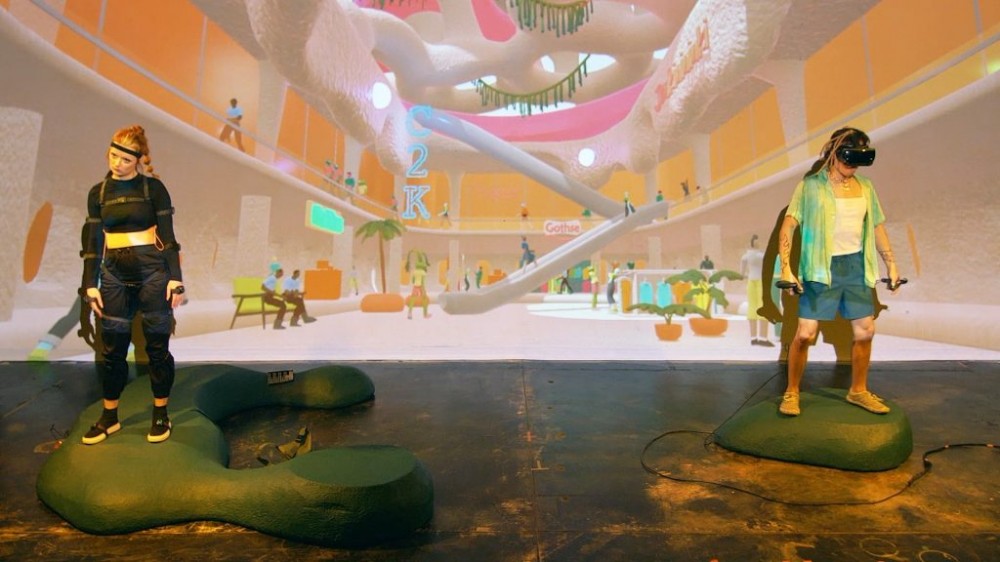
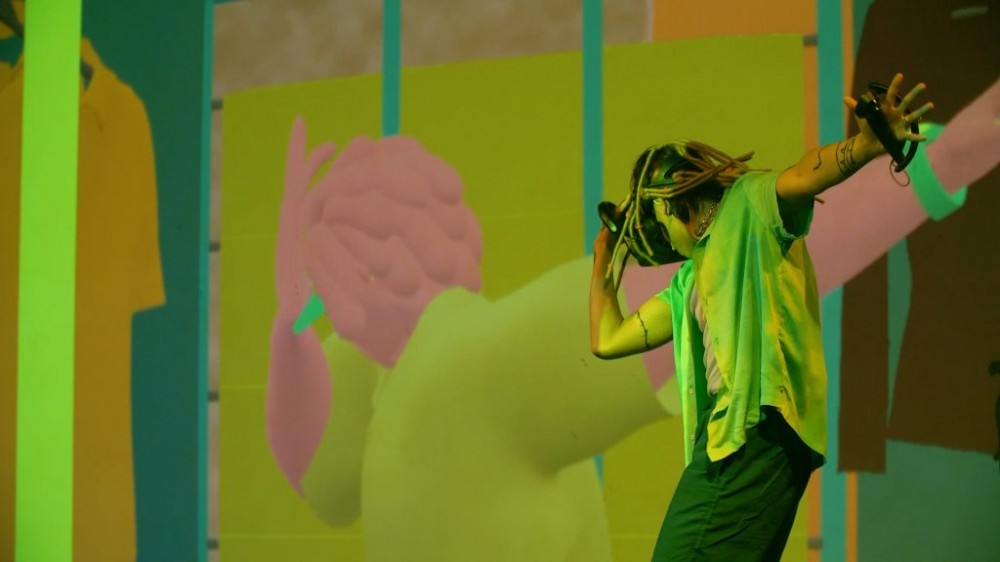
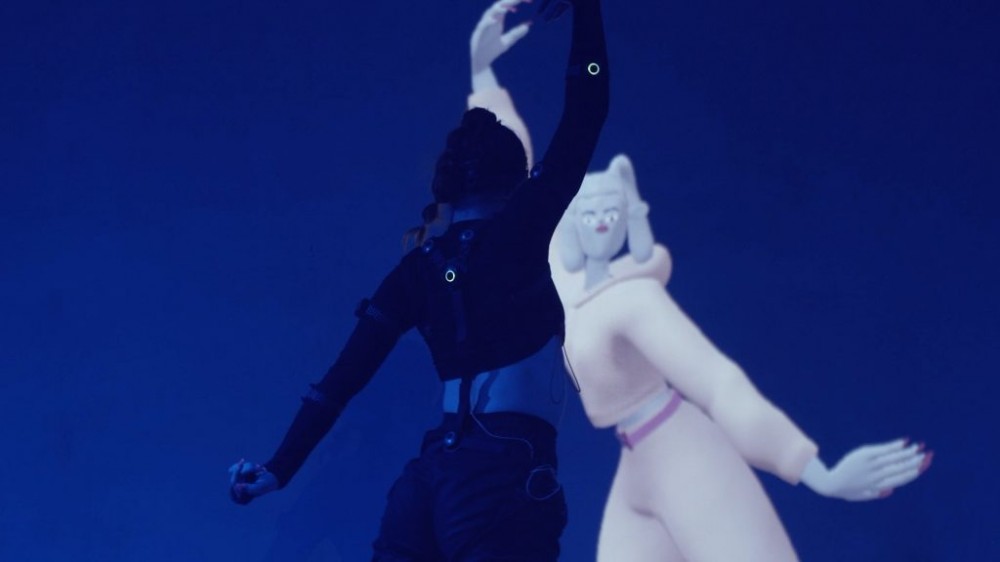
“The whole performance is based on the two lead performers acting more as players within this game, with us on the other side putting up challenges for them to overcome,” he explains. “A big part of this is improvised, they have to quickly respond to what is happening while following the core storyline of the script.” By replacing the bots of Radicalization Pipeline and Ork Haus with living, breathing participants, the artist emphasises the potential for unique forms of communications and interactivity achievable through hybrid applications of AR and XR technology. For Triantafyllidis, the metaverse isn’t the means to remove the physical restraints on commerce, but a collection of tools by which it might be possible to create entirely new forms of art. In the case of Anti-Gone, this might be an entirely new form of public theatre. The initial run of performances of the play took place before the pandemic, an early, proof-of-concept at Human Resources in Los Angeles, followed by a fully fledged premiere at Sundance in 2020. Covid-19 forced the production team to adapt the show for an online audience, which was shown as a livestream performance at a few online festivals during the darkest days of the pandemic. “We made this decision to cut the stage and put it completely behind the scenes and only livestream the game engine side of the project,” the artist explains. “It became this very bizarre puppet theater animated film with the livestream chat happening on the side and the performers being able to see that chat and interface with it. There was this very uncanny and unsettling sensation where you felt like you were watching a 3D animated film that was responding to what you were saying, but the whole machine of how this was working was not transparent.” The experience opened the Triantafydillis’s eyes to the collaborative, crowd-sourced potential of these experimental livestream performances, which allow for the possibility of real time, communal improvisation.
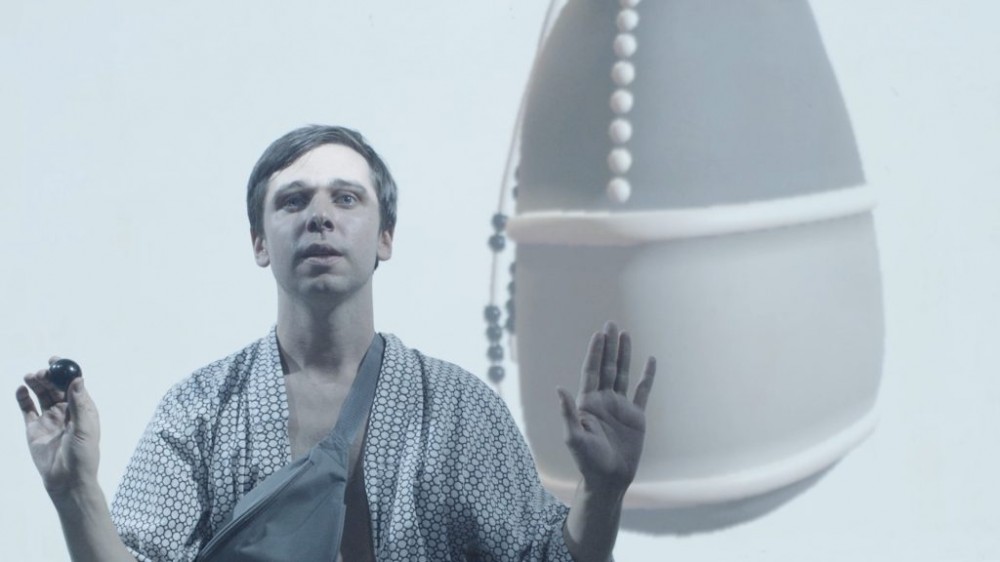
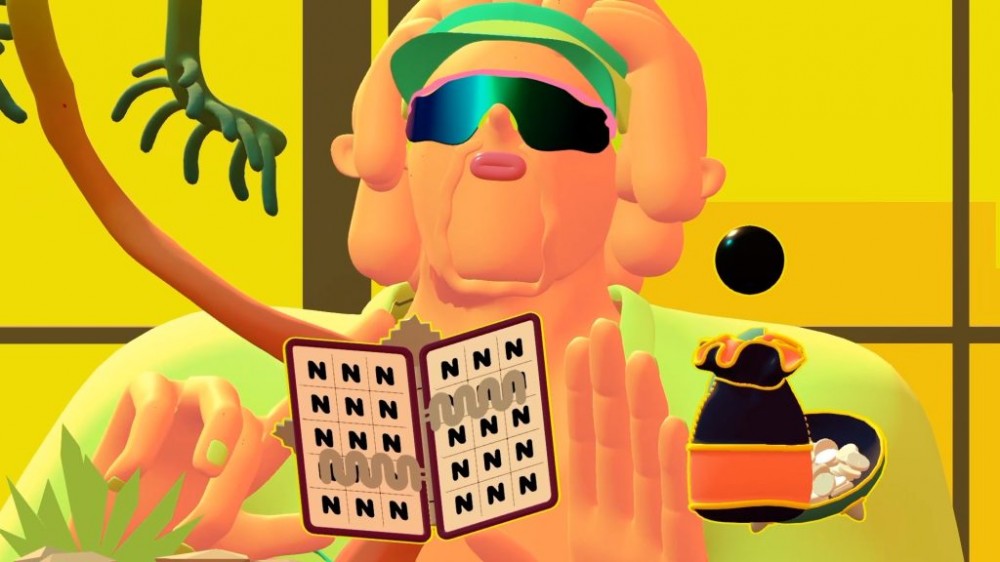
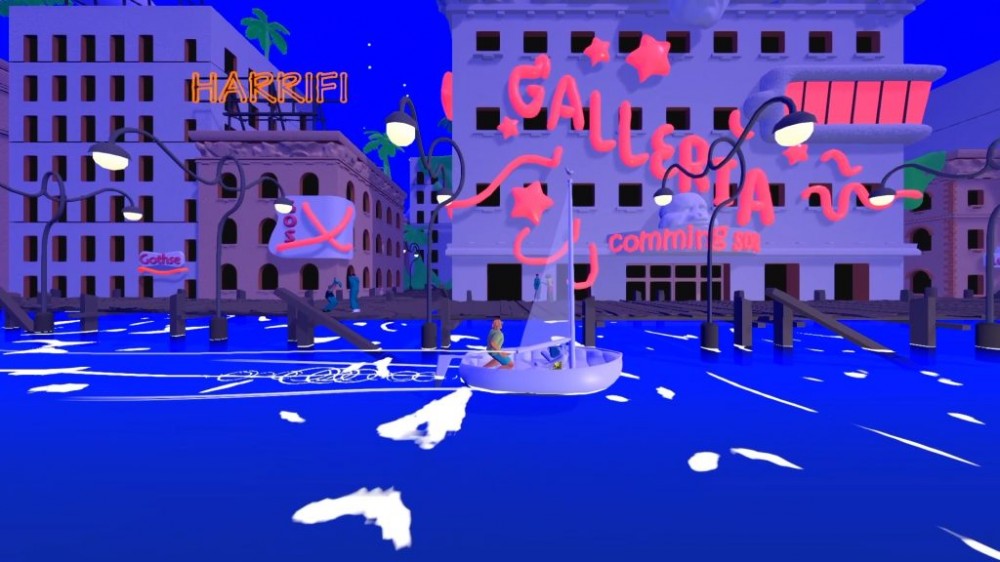
“Because it was being performed in real time and because it was so responsive, it gave the audience a feeling of togetherness,” he explains. “The sense that this was a unique moment in time, that we’re all going through together, a performance that is happening for us right now and that we have the privilege of seeing it as it’s happening.” It can at times be hard to see the good in the slow but sure osmosis of public space by corporate expansion, something that challenges the role of the artist and gives rise to the obsessive refinement of artworks into capital we have seen proliferate across the NFT space over the last few years. But in Triantafyllidis’s exploration of possible bridges between the virtual and the physical he finds optimism in online art spaces. Anti-Gone, in its physical and online iterations, points towards the kind of things we might be able to say to each other and the kind of interactions we might be able to have when we are able to integrate this technology into an intrinsically communal, collaborative art practice.
For more information about Theo Triantafyllidis and his work you can follow him on Instagram and visit his website.
Anti-Gone Credits:
A Performance in Mixed Reality by Theo Triantafyllidis
Commissioned and Produced by Onassis Culture
Writer (Original Comic Book) – Connor Willumsen
Key Collaborator – Matthew Doyle
Production Manager, Set and Costume Design – Polina Miliou
Curator – Mari Spirito
Cast – Lindsey Normington, Zana Gankhuyag, Matthew Doyle
Composer and Live Music Performance – Cameron Stallones
Lighting Engineer – Connor Childs
Motion Capture and Movement Coach – Rachel Ho
Lead Programmer – Stalgia Grigg
Lead 3D Character Designer – Joseph Melhuish
3D Artists – Sara Drake, Ryan Decker, Siyao Zheng
Documentation Video – Nina Sarnelle, Brian Echon
Motion Capture technology provided by Noitom MoCap

